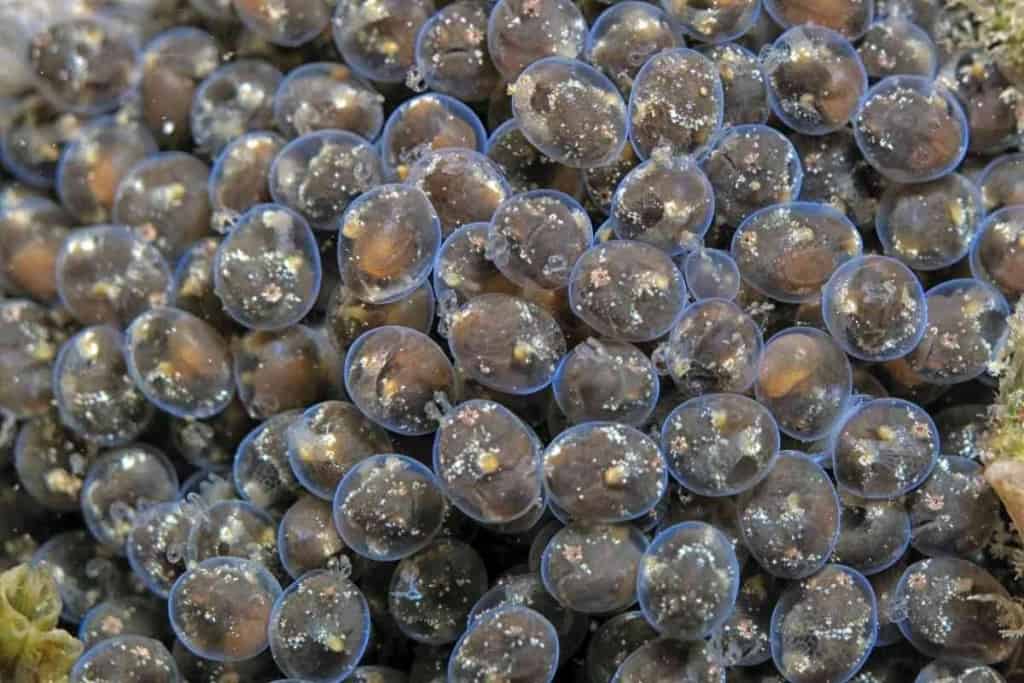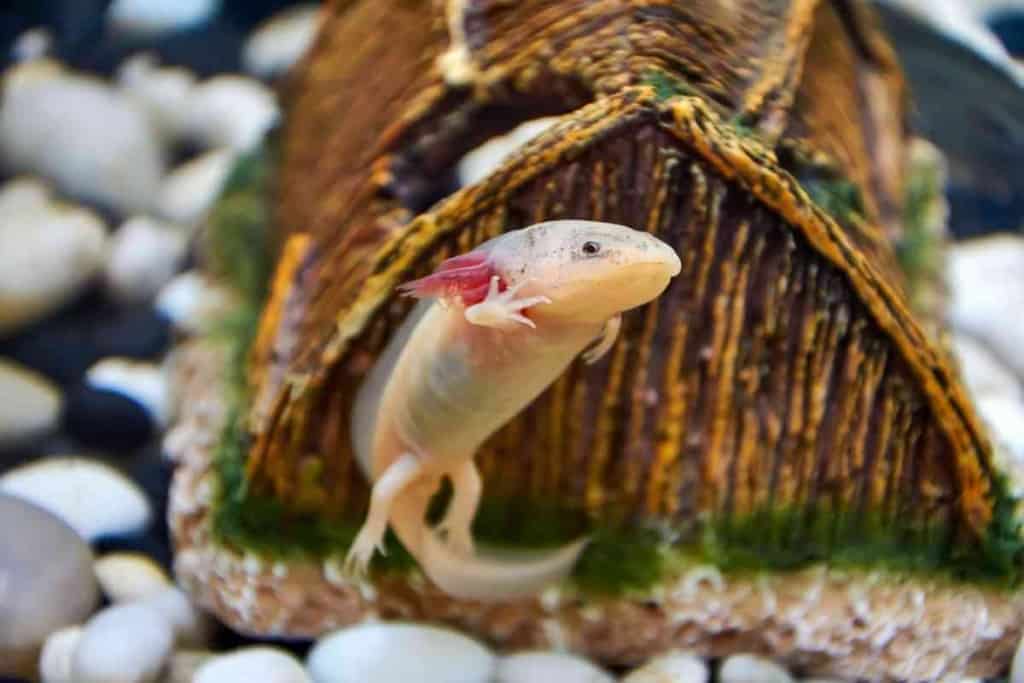What To Do With Unwanted Axolotl Eggs
Let’s face it. Female axolotls can lay so many eggs at once that it can be challenging to keep track of them. And if you have a male for her, once they hatch, you’re going to have a hard time keeping track of these tiny creatures. These paedomorphic salamanders can lay an average of 300 eggs after each spawning and lay as many as 1,000 eggs at a time. What can you do with your axolotl’s unwanted eggs?

What should I do with unwanted axolotl eggs?
If your axolotl laid eggs that you do not need, you can usually just leave them in the tank, and your axolotl will eat them. To dispose of them yourself, you can freeze them and then throw them away or compost them. You can also donate them to science, sell them to a breeder, or even eat them yourself.
There are many creative ways to repurpose them, so take a splash and find out!
Donate Them to Scientific Research
Donate unwanted axolotl eggs to a local school or university. Science teachers and professors would love this act of kindness to show their students how axolotl life begins and thrives.
They can separate the eggs into different tanks and conduct experiments on how long each group of eggs takes to hatch based on water temperature. In general, water temperatures ranging from 68-72 F will allow eggs to hatch within 14-16 days, while any temperature below that range may cause a hatch time of 20 days or more.
Students can learn the importance of water temperature and how it contributes to faster egg hatching. Plus, there are other observations and experiments to experience when the axolotl eggs hatch.
Let the Axolotl Parents Eat Them
Axolotl parents, unfortunately, can care less about what happens to their babies, whether they are eggs or hatched babies. They are not very social animals and do not mind eating their babies or each other in that manner if they inhabit a tank together.
If you prefer not to go through the trouble of donating them, you can have the axolotl parents eat the eggs. Axolotls are carnivores, so the meaty composition of the eggs will give them the desired taste and protein needed to thrive.
You Can Eat Axolotl Eggs, Too!
While eating eggs from a species other than birds may seem odd, axolotl eggs were delicious delicacies in ancient times and recent history.
Aztecs consumed axolotl eggs and held axolotls in high regard as a deity. Citizens in Mexico consume axolotls and their eggs today.
You can treat the axolotl eggs like chicken eggs and make fried eggs, omelets, and egg salad or soup. The possibilities are endless! The only thing that is not possible is an axolotl sunny-side-up egg.
If you want to be even more innovative, try the axolotl eggs instead of chicken eggs when baking.
Since axolotl eggs are tiny, you may need at least eight to ten axolotl eggs to equal the size of one chicken egg when baking cakes or cookies.
Sell Them to Axolotl Breeders or Local Pet Stores
Check your local surrounding pet stores to see if they would be interested in purchasing your axolotl eggs so they can raise and sell them to pet owners. If you know any fish breeders in the area, ask if they breed axolotls. They may be interested in growing your eggs if you can fairly price them.
Depending on the number of eggs you are selling, fair prices maybe 50 cents to $1 per egg. For example, if you have 50 to 100 eggs, you may charge 75 cents per egg if you ask for 50 or more in a bulk purchase.
Any purchases that are 50 or under can have an agreed-upon charge of $1. If you have 200 to 400 eggs, you may ask for 50 cents to 75 cents each depending on what you and the buyer agree upon.
Adult axolotls generally cost $30 to $50 each, so asking for up to $1 per axolotl egg is reasonable. Juveniles are still worth about $20, which is still an excellent profit for local axolotl breeders and pet stores that may be interested in your axolotl eggs.
What Not To Do With Axolotl Eggs
If you are disposing of the eggs, do so correctly. You should not flush them down the toilet or place them in the trash can because the environmental temperature can cause them to still hatch and invade the safe space of other people and animals nearby.
Younger children interested in caring for axolotls shouldn’t be entrusted with caring for axolotl eggs. With the supervision of an adult, the child can manage an adult axolotl until they are old enough to care for axolotl eggs properly.
Are you or your child interested in owning an axolotl? Learn more exciting axolotl facts before taking one in as a pet.

How To Properly Dispose of Unwanted Axolotl Eggs
So if you cannot throw the axolotl eggs directly into the trash, how do you properly dispose of them?
First, gather the eggs into a container you are comfortable disposing of or a plastic bag. Seal the container or plastic bag closed and place it into a freezer. Freeze for at least a few hours before disposing of them into a trash can or compost bin.
Freezing the axolotl eggs will trigger their hibernation mode. As the eggs get colder, the larvae inside them will not feel pain as their vitality is stripped from them.
The eggs need to be fully frozen solid before you can dispose of them so that they do not run the risk of hatching in a new environment that will cause issues for other surrounding life, especially if there are hundreds of eggs you are discarding.
Final Thoughts
There are many creative ways to repurpose axolotl eggs. Find the best method that works for you to have a plan in place, especially if accidental breeding happens.
